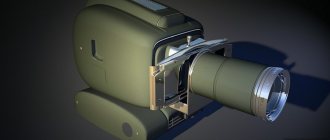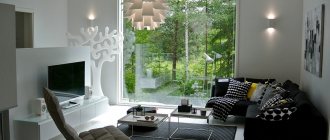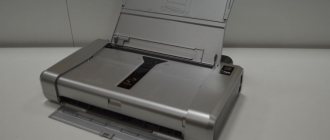How to Choose a Home Theater Projector: Lamps vs. Lasers
Three types of sources can supply light to the screen. These are lamps (halogen or gas-discharge), as well as LEDs and even lasers. All three have their own advantages and disadvantages.
- Lamps. The light from them comes out bright and stable. However, the lamps do not last long.
- LEDs. They work, of course, longer, heat up less, and therefore do less harm to the surrounding components of the projector. But in terms of luminosity, they are inferior to lamps. Besides, what's the point of buying a fancy projector if you can't even use a filter? But you won’t be able to use it with LEDs.
- Lasers. They are very difficult to calibrate so that the output is a clear picture with natural colors. Therefore, lasers are most often used by professionals, for example, at exhibitions or installations in art museums.
The most common resolution for home projectors is classic FullHD (i.e. 1920 by 1080). However, the first signs with 4K support have already appeared on the market.
Which is better - LCD or DLP projector?
- LCD matrix A set of several semi-permeable (that is, transmitting light of one spectrum and cutting off another) mirrors and a prism, which reunites the light streams and forms a full-color image. The projector may have one or more LCD matrices; the most common number is three. The higher the number of matrices, the better the brightness and color of the picture (and the better the build quality of the product must be for normal operation of the device). However, there is a downside - the more components, the larger and heavier the projector. And more expensive, of course.
- DLP matrix It is a collection of many tiny mirrors that all fit on the surface of the projector chip. The image with a DLP matrix is more contrasty and clear than that of a liquid crystal matrix, however, when changing frames quickly, unpleasant artifacts may appear on the screen. Most often, projectors use one such matrix.
- LCOS matrix Combines the strengths of both LCD and DPL matrices, while eliminating the weaknesses. There is only one downside to such a matrix - you have to pay for quality.
How to choose a projector screen
It is important that the screen size matches the proportions of the projected image, that is, it has the same width to height ratio. For films, the classic 16:9 format is usually used. For slides – 3:2.
Typically, screens attached to the wall or ceiling are used at home. Portable options are good for presentations or school classes, but for an ordinary apartment they are quite inconvenient.
And inveterate film buffs will probably prefer a stationary screen in a frame. You can’t hide it, you can only curtain it. But the surface will always be perfectly flat.
But the coating should be selected based on the level of illumination in the room. A distinctive feature of the white matte finish is its ability to diffuse light equally in all directions. This means that the image on such a screen can be perfectly distinguished from any angle. It is a versatile choice for both classrooms and home.
A beaded coating, unlike a matte one, reflects light mainly towards the source, so it will be difficult to distinguish the image from the side. But the picture is clearly visible even in a brightly lit room.
And there is also a reflective coating with high gain and a wide viewing angle. This is the optimal choice for ceiling screens.
TV or projector – which is better for the home?
In terms of screen size, the primacy remains with the projector. If desired, you can stretch the screen even across the entire wall.
But in terms of image quality, the TV wins in the mid-price category. The main problem with the projector is the overexposure of the picture, grayish black and white colors.
But in the high price category, both projectors (especially laser ones, especially those based on DLP) and televisions are almost neck and neck.
It is worth considering the ease of installation. To install the TV, you will have to: bring the device home, place it on a horizontal surface and plug it into a power outlet. If you want to hang it on the wall, drill a hole for the bracket. But you will have to tinker with the projector: first install or hang the screen, supply electricity to it (if it is electric), choose a place for the projector, pull cables to it from the device that carries the files being played, take care of the audio system and stretch the cables to the media from there .
Paradoxically, the price of an average good projector and an average good TV (if we consider them in a home theater conglomerate) are approximately the same. A good 40-inch TV, an accompanying audio system and a high-resolution projector, screen and audio system will cost about 80-85 thousand rubles. every.
How to find the perfect location for your screen?
This question may seem strange: at first glance, the best place for the screen is obvious - in the center, at the front of the audience. However, direct sunlight, artificial lighting and brightly colored walls, floors and ceilings can negatively affect the quality of the projected image.
It is best to position the screen so that a minimum amount of both sunlight and artificial light falls on it. If possible, close the windows with curtains and turn off the lights in the classroom. Having dark walls, ceilings and/or floors will also reduce the amount of reflected light hitting the screen.
So, darken the audience as much as possible and look around. Where is the least amount of light? Note that, compared to the center of the wall, the corner portion of the room may provide additional cover from reflected light. Sometimes darkening the wall behind the screen can improve picture quality.
The Best Home Theater Protectors
Optoma HD144X
The average price is 38,000 rubles. Characteristics:
- portable widescreen projector
- DLP technology
- resolution 1920×1080 (Full HD)
- luminous flux 3200 lm
- contrast ratio 23000:1
- HDMI connection
- outputting images from USB flash drives
- 3D support
The list of home projectors in the 2021 rating opens with a model that can produce excellent image quality even when projected onto a regular white wall.
The projector has a high resolution, so the image quality is quite comparable to cinema, largely thanks to the excellent performance of DLP technology.
Pros : picture quality, brightness, colors.
Cons : the lamps in the device do not last long; To view, you need absolute darkness in the room, otherwise there will be problems with dark colors.
BenQ W1720
The average price is 76,000 rubles. Characteristics:
- stationary widescreen projector
- DLP technology
- resolution 3840×2160
- luminous flux 2000 lm
- contrast ratio 10000:1
- connection via VGA (DSub), HDMI
- HDR support
- outputting images from USB flash drives
- 3D support
The image quality and color of the picture are simply mesmerizing, even on a large screen with the image magnified twice. Well, of course, in 4K resolution.
And for gamers, built-in HDR support will be important, which gives the picture on the screen clarity and brightness. Moreover, the image does not lose quality even in the absence of a special screen (it can be projected directly onto the wall).
Pros : resolution, color rendition.
Cons : in a brightly lit room there is a loss of color; There is a thin gray frame along the edge of the image, which may interfere with viewing.
TouYinGer X20
The average price is 6,000 rubles. Characteristics:
- ultraportable projector
- LCD technology, LED light source
- resolution 800×600
- luminous flux 2200 lm
- contrast ratio 2000:1
- connection via VGA (DSub), HDMI
- outputting images from USB flash drives
- outputting images from memory cards
- weight 1.1 kg
The cheapest projector in the rating. At the same time, for your money you will get a parting capable of producing an image in 720 resolution and with good quality.
Overall, an excellent option if you want to understand what a projector is and whether you need one at all. Of course, the resolution is not great, and the brightness is not as good as we would like, but for such a price it would be a shame to wish for more.
The main disadvantage of the device is the lack of support for AC3 audio, but this is one of the most common formats for video files from the network.
Pros : price, size, weight.
Cons : noise during operation, lack of ac3 support.
What are "lumens"?
Many people are confused by this term, but it is quite simple.
This is the amount of light emitted by the projector lens. It is measured in units called "lumens", and this characteristic accompanies every projector. In other words, we can use the same term to refer to the brightness of the projector. To determine the exact volume of light flux in lumens, a completely white image is projected onto the screen, since in this mode homogeneous light is evenly distributed over the area. Thus, lumens tell us about the maximum possible brightness of the projector.
Best Projectors for School: Presentations and Study
Epson EH-TW9400
The average price is 185,000 rubles. Characteristics:
- stationary widescreen projector
- LCD x3 technology, UHE light source
- resolution 1920×1080 (Full HD)
- luminous flux 2600 lm
- contrast ratio 1200000:1
- connection via VGA (DSub), HDMI
- network connection via Ethernet
- HDR support
- outputting images from USB flash drives
- 3D support
The king of projectors for the school assembly hall and stands like a king. But for this price you get: high brightness, contrast comparable to top-end TVs, excellent colors, HDR support, quiet operation, excellent focusing and many different options. Including zoom, the ability to connect different presets for even better picture quality and much more.
Pros : Great image quality.
Cons : Like all 3LCD projectors, blacks aren't as black as I'd like. The matrix may become dusty, which will inevitably affect the image quality, but you cannot clean it yourself; you will have to go for repairs.
2. Xiaomi Mijia Laser Projection MJJGYY02FM
The average price is 86,000 rubles. Characteristics:
- stationary widescreen projector
- DLP technology, Laser-LED light source
- resolution 1920×1080 (Full HD)
- luminous flux 5000 lm
- contrast ratio 3000:1
- HDMI connection
- connection to the network via Wi-Fi, Ethernet
- outputting images from USB flash drives
- weight 7 kg
One of the few projectors powered by laser light sources. Along with innovation come:
- excellent solid design;
- high-quality execution;
- great picture;
- convenient remote control.
At the same time, the device is almost silent. Alas, like many other products from Xiaomi, this one is aimed primarily at the Chinese market. This means that the menu is not only not in Russian, but not even in English. To eliminate this drawback, you will have to send the projector for re-flashing.
Pros : design, execution, image quality.
Cons : menu in Chinese without firmware.
Epson EB-X41
The average price is 27,000 rubles. Characteristics:
- portable projector
- LCD x3 technology, UHE light source
- resolution 1024x768
- luminous flux 3600 lm
- contrast ratio 15000:1
- connection via VGA (DSub), HDMI
- outputting images from USB flash drives
- weight 2.5 kg
Among the top projectors for presentations and studies is a product from Epson. Its weight is not as tiny as that of pocket-sized models, but at the same time it is not as substantial as that of stationary home theater products.
The picture is good, perfect for presentations and educational films. It’s nice that, unlike other models, the cooling air is not exhausted backwards (and doesn’t blow directly into the viewers’ faces), but forwards.
Pros : portability, picture quality, thoughtful design.
Cons : in the full sense of the word, it can only function when paired with a computer, and to connect Wi-Fi you will have to spend money on a proprietary USB adapter.
Illuminated – not necessarily overlit
If the goal is not to provide sufficient illumination for reading, then in order to properly navigate the room, 5 lux may be enough. This illumination is typical for corridors in apartments and well-lit entrances. In fact, you can do even less... and somewhere at this level of illumination, the contrast of the projector itself will already begin to play a role, since the “black” on our screen, already dimly lit by light sources, will already be much darker, and the influence of the projector itself, its illumination, may make itself known.
Of course, in complete darkness there is a chance to get closer to the level of contrast declared by the manufacturer (by the way, the laser Epson EB-L1100U has simply stunning contrast thanks to the new light source).
Best Pocket Projectors
Everycom S6 plus
The average price is 13,000 rubles. Characteristics:
- pocket widescreen projector
- DLP technology, Laser-LED light source
- resolution 854×480
- luminous flux 1500 lm
- contrast ratio 2000:1
- HDMI connection
- connecting to a network via Wi-Fi
- outputting images from USB flash drives
- outputting images from memory cards
The S6 plus is not only one of the smallest and lightest, but also one of the cheapest projectors. Its price compares favorably with stationary monsters for home theaters and even its own brothers - pocket projectors.
Thanks to the DLP matrix, the picture is clear and bright, even if its resolution is small. This model can be powered by a battery that will last for a couple of hours of viewing, but no more, so you will have to carry the charger with you.
Pros : size, weight
Cons : Own stand is unreliable.
DIGMA DiMagic Cube
The average price is 15,000 rubles. Characteristics:
- pocket widescreen projector
- DLP technology, LED light source
- resolution 854×480
- luminous flux 50 lm
- contrast ratio 1000:1
- weight 0.34 kg
The projector from DIGMA with the self-explanatory name “magic cube” really looks like a cube. What makes it magical is its not very high price, its small size, the ability to play video from media and the presence of a remote control. And to make it easy to understand the settings, the device has an interface in Russian. Powered by a battery that is enough for a couple of movies.
Pros : compact size, built-in sound.
Cons : noisy, does not read mkv format.
Acer C202i
The average price is 21,000 rubles. Characteristics:
- pocket widescreen projector
- DLP technology, LED light source
- resolution 854×480
- luminous flux 300 lm
- contrast ratio 5000:1
- HDMI connection
- outputting images from USB flash drives
- weight 0.35 kg
In size and weight, the Acer C202i is more reminiscent of a pocket book than a high-tech device. It’s convenient that with the help of EZCast technology, the projector can be connected without any wires to a computer, a smartphone, or even capricious devices from Apple. And for wire lovers there is HDMI.
Moreover, the kind manufacturer included a tripod in the kit, with which the projector can be installed anywhere without losing viewing comfort.
Pros : size, tripod and remote control included.
Cons : you can only watch the picture in a darkened room, the built-in speakers are purely for show, the audio quality is low.
Illusion of contrast
At a certain threshold value of the difference between the dark and light areas of the image, the so-called. an illusion with a shadow on a chessboard, when in reality the neighboring cells are just different shades of gray and the cell in the shadow seems lighter, while both cells have the same shade. All this becomes possible thanks to the peculiarities of our brain. And this is exactly the minimum level of contrast to which we strive.
The best stationary projectors
Epson EH-TW6700
The average price is 108,000 rubles. Characteristics:
- stationary widescreen projector
- LCD x3 technology, UHE light source
- resolution 1920×1080 (Full HD)
- luminous flux 3000 lm
- contrast ratio 70000:1
- connection via VGA (DSub), HDMI
- outputting images from USB flash drives
- 3D support
- weight 6.9 kg
The top three best stationary projectors are opened by a model from Epson. It’s big (no joke, almost 7 kg), but this is not a problem for a stationary projector. True, this size is best suited for a country house or a spacious studio apartment, although owners of more modest premises will be able to find a lot of pleasant things in the EH-TW6700.
The projector's picture is excellent, especially in Cinema Eco mode. Moreover, even the black color, which many projectors suffer from, is truly black on the EH-TW6700. In addition, this is one of the rare projectors that can independently play video from a flash drive.
Pros : picture, ease of use.
Cons : after 800+ hours of operation, the picture may begin to fade and color distortion may begin.
JVC LX-UH1
The average price is 150,000 rubles. Characteristics:
- stationary widescreen projector
- DLP technology
- resolution 3840×2160
- luminous flux 2000 lm
- contrast ratio 100000:1
- connection via VGA (DSub), HDMI
- HDR support
- outputting images from USB flash drives
- weight 4.6 kg
Let’s say right away that the 4K resolution of this projector is not entirely true. In fact, this is regular FullHD with the “4K with shift” function. The picture quality is excellent; if the source is 4K, then the projector will show it in 4K (or close enough to it), but Full HD will come out even better.
At the same time, the JVC LX-UH1 has minimal projection distortion. Users will appreciate the abundance of settings and amenities, such as a backlit remote control.
Pros : image quality, user-friendly interface.
Cons : it starts to make noise, this can be treated by activating the e-shift function.
Sony VPL-HW45ES
The average price is 130,000 rubles. Characteristics:
- stationary widescreen projector
- SXRD x3 technology, UHP light source
- resolution 1920×1080 (Full HD)
- luminous flux 1800 lm
- HDMI connection
- outputting images from USB flash drives
- 3D support
- weight 9 kg
One of the main advantages of this projector (besides the excellent picture, which is expected in this price category) is its quiet operation. You can safely watch a movie while your one-year-old baby is sleeping in the next room.
However, the size and weight of the projector are quite large, so it may be inconvenient to use in an ordinary small apartment. Especially considering the difficulties with focal length, the VPL-HW45ES has a specific one.
Pros : picture quality, quiet operation.
Cons : traditional problems with the picture in a lit room; There may be a plastic smell during operation.
Light projection mechanism
To visualize the mechanism of light projection, imagine a stream of water from a shower.
The farther from the colander, the wider the streams are distributed. The water pressure at the tap and the amount of water coming out remain constant, but the flow distribution area changes depending on the distance. The same thing happens with the light from the projector lens. If you increase the size of the image by moving the screen further or adjusting the focal length, you change the amount of light that falls as a projection, i.e. brightness.
The amount of light coming out of the projector remains the same, it's just distributed over a larger or smaller surface depending on your configuration.
Office variation
Office projectors must have special characteristics. The device will display static slides on which you need to examine the smallest details.
The specification of the work forced us to put forward a number of additional requirements for equipment of this type:
- A portable projector should work well with high-resolution images. The matrix must fully comply with the characteristics of a PC or laptop.
- No need for a large number of video inputs. Their complete absence is also allowed. In this case, the device will work on the principle of a TV tuner.
Presentation projectors should have the following features:
- The optimal solution is to purchase a 3LCD model.
- The brightness must be at least 2000 lumens.
- It is best to choose pictures in 4:3 format for playback. In this case, their resolution should be 800*600.
- Convenient projectors for classrooms always contain an image adjustment function.
- The composition must have a sufficient number of ports. They are used to connect to a laptop or any other external device.
If you are choosing a projector for a conference room, it is recommended to choose a stationary model. If you plan to hold performances in another territory, then the optimal solution would be a mobile option. The portable device weighs little, so it can be easily transported even on public transport.











